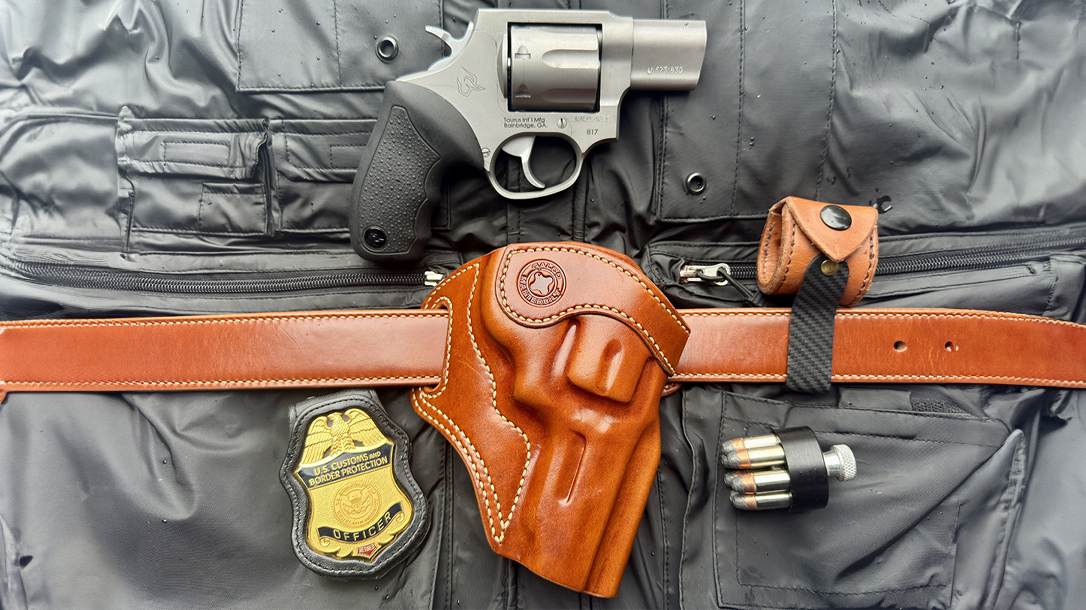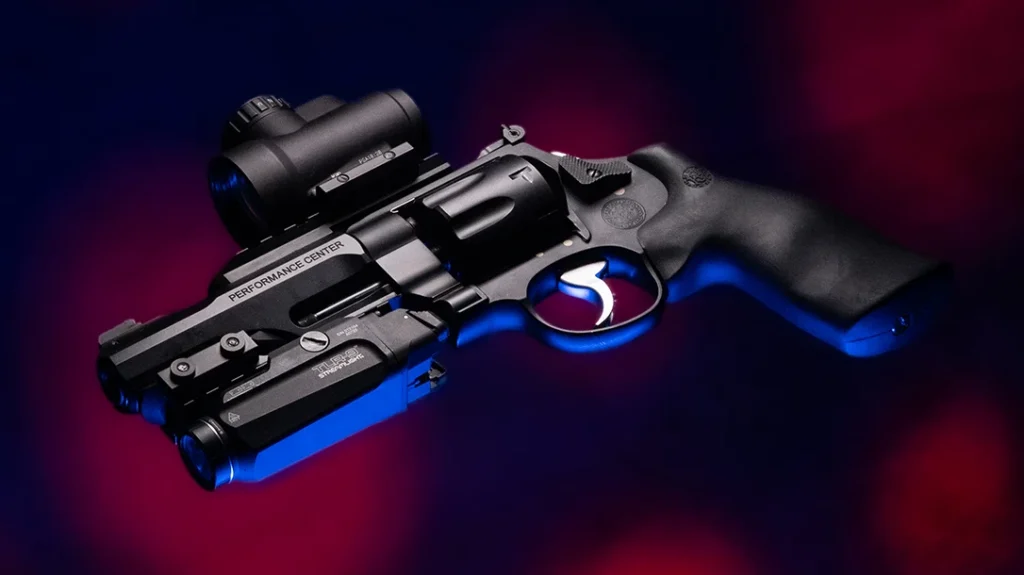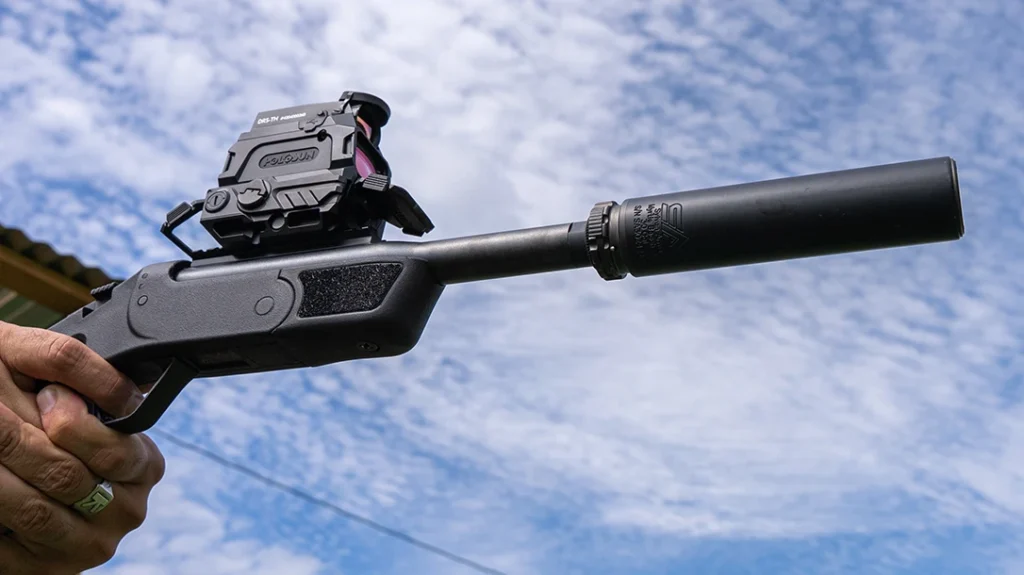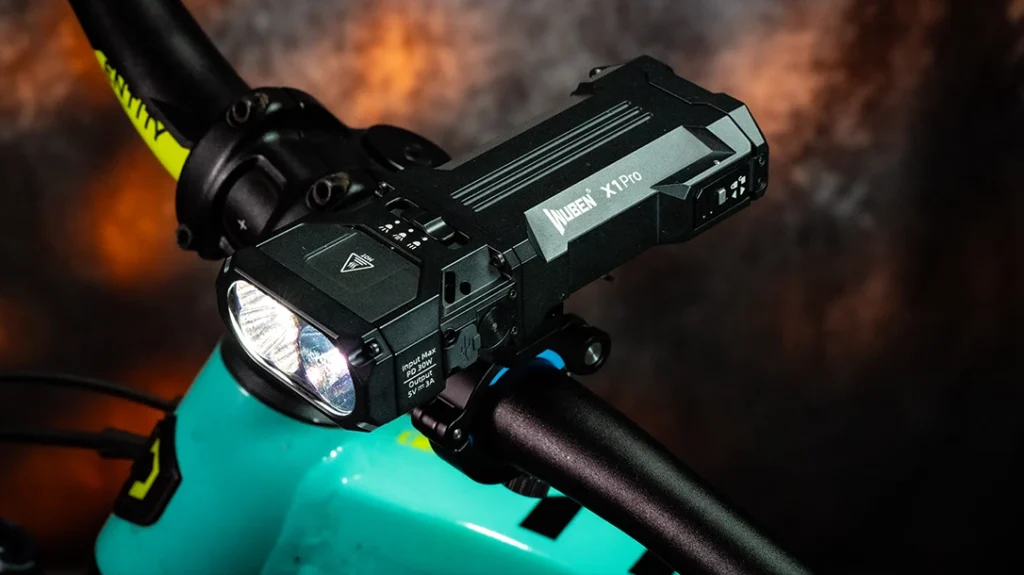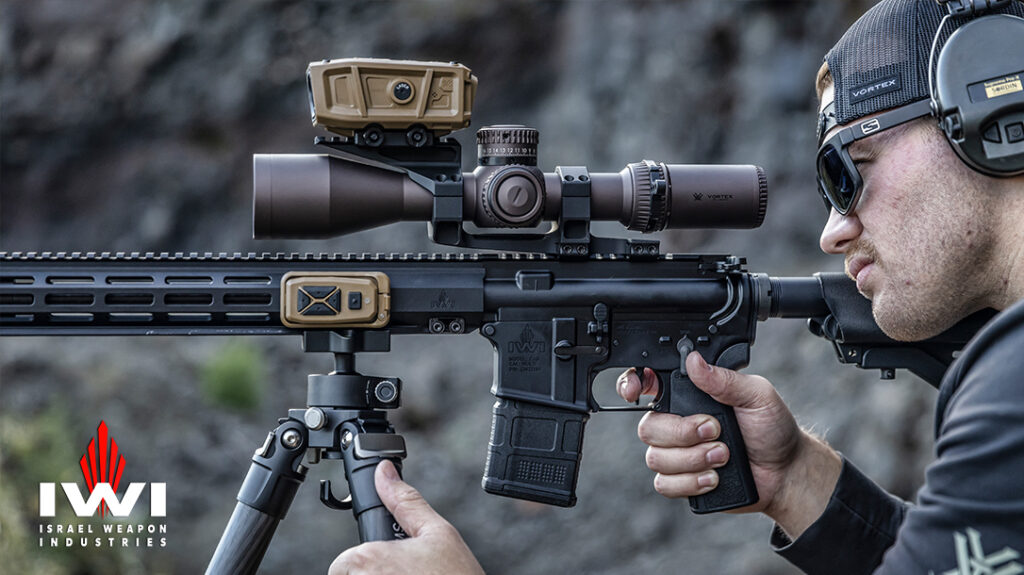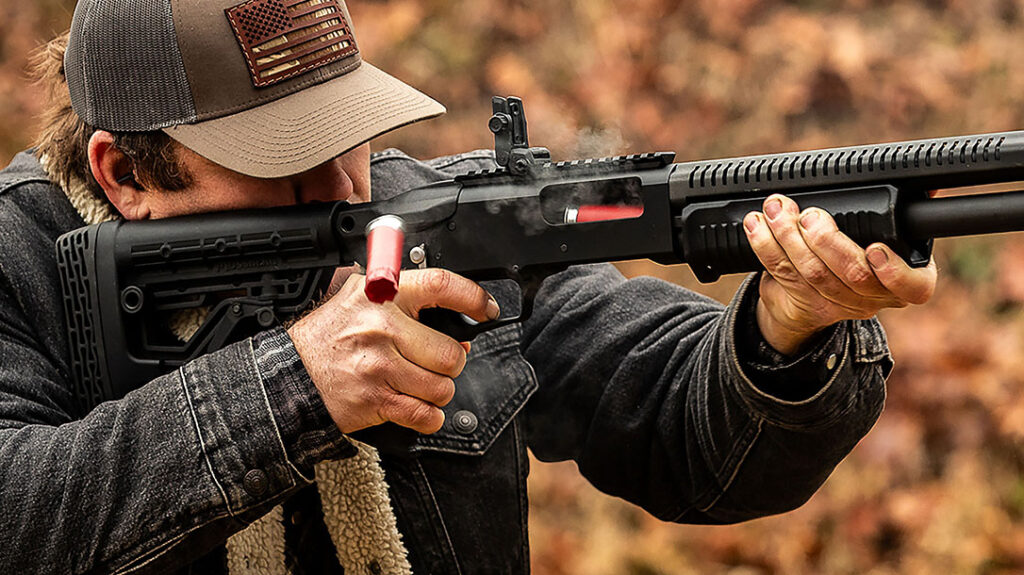When I consider Taurus handguns, especially their revolvers, a jingle from an old TV commercial comes to mind, “You’ve Come a Long Way Baby!” I recall the early revolvers which first came to the United States from Brazil in 1968. They were somewhat crude copies of the S&W K-frame platform, with their awkward-looking, straw finished hammer and trigger, serrated cylinder flutes, and rather rough checkered grips. However, the price was right and they gained a foothold in the American gun market.
The company’s growing presence in the USA prompted the establishment of a subsidiary, Taurus International (Taurus USA) in 1984. Since then, Taurus handguns have increased in quality and popularity. While many of their handguns are still made in Brazil, today, they have a facility in Bainbridge, Georgia, where they build some guns from imported parts, plus they produce the TX22, GX4 pistols, plus the entire line of Heritage revolvers.
Return of the Model 817
I must not have been paying attention back then, but from 1999 to 2006, Taurus imported the Model 817, a 7-shot, 2-inch barrel, .38 Special in a “Ultra-Lite” configuration that weighed 21 ounces. Why the short production run I’m not sure, but in July 2025 they re-invented the Model 817. But this time, it has all-stainless-steel construction, with an empty weight of 30.26 ounces. I’m a big fan of 6-shot .38 Special snub-nosed revolvers; so, what’s not to like about a stainless snubby that offers a 16.67% increase in firepower? Size-wise, it’s only 0.25-inches wider (1.51-inches) than most 5-shot compact revolvers. Of course I requested a new Model 817 for testing.
Advertisement — Continue Reading Below
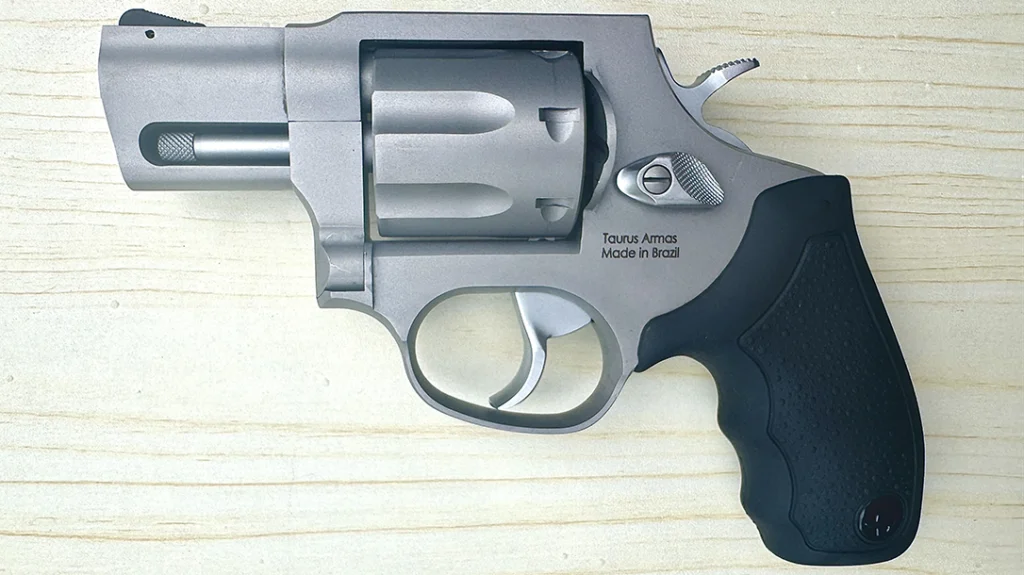
The revolver came in the usual compartmented cardboard box, which also contained a security padlock, and an owner’s manual. A close inspection of the exterior indicated close attention to fit and finish by Taurus. The frame cylinder and barrel have a matte stainless surface, while the hammer, trigger and cylinder thumb-latch are a lighter silver color. The heavy barrel has a full underlug, and forms a wide rib at the top. A black serrated ramp front sight is attached to this rib by a tiny roll pin. This makes the front sight removeable and it utilizes the same footprint as the Taurus Model 856, which allows a variety of sight options like the AmeriGlo H3 GJ night sight.
Frame & Other Details
The frame appears to be the same medium frame used on many of the Taurus .38/.357 revolvers. Integral with the top-strap, the rear sight has a wide square notch, with an inset at the rear that improves the sight picture. The cylinder is fluted, rotates counter-clockwise, and locks at the rear. Another locking point is a latch on the crane or yoke that engages a notch in the frame below the barrel forcing cone. This allows for a longer ejector rod than you usually find on snubs. The action has a transfer bar for safety, and the rebounding firing pin is frame mounted. The hammer has a wide and deeply checkered spur, while the smooth-faced trigger is 0.325-inches wide.
Advertisement — Continue Reading Below

Single action trigger pull weight averaged 7 lbs. 4 oz., but felt lighter due to the wide trigger. The double-action pull exceeded what my electronic gauge could register, but I’d give it 13 Lbs. minimum. It has a well-designed and finely checkered thumb-latch; I’ll find out later if it’s a thumb-biter. The grip frame is reduced in size and doesn’t match the contours of the black soft rubber ergonomic grips. Both sides of the grips are pebble-textured, with a small, shiny black Taurus medallion near the butt. They are small enough to aid in concealment. For versatility, the grips are interchangeable with existing Taurus Judge and Tracker grips.
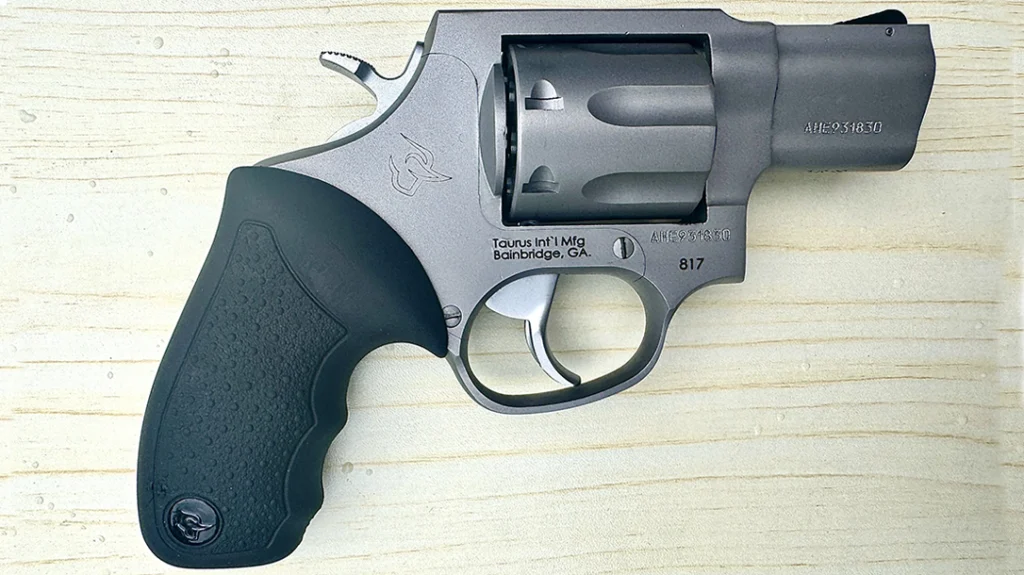
Advertisement — Continue Reading Below
Shooting Preparation
A check in my ammo locker provided some interesting .38 Special test cartridges; all but one make was +P rated. A round that doesn’t rely on a hollow nose and expansion for transmitting bullet energy is the Honey Badger from Black Hills. It has a solid copper 100 gr. bullet with an X-shaped nose, and flutes extending down the sides of the bullet. The spinning bullet bites into the target like a drill bit, providing tissue damage and penetration.
Next, is a 125 gr. JHP from Double Tap. It has a conventional semi-jacketed bullet, with skives on the jacket to enhance expansion.
From Federal, I had their 120 gr. Personal Defense Punch load. This bullet jacket extends to the front of the hollow nose and is heavily skived.
Advertisement — Continue Reading Below
My non +P load, was the Critical Defense Lite from Hornady. It features a 90 gr. FTX bullet that uses Flex Tip technology to ensure controlled expansion and good penetration.
A load that I used as a LEO is the Remington HTP that has a 125 gr. semi-jacketed HP bullet. The copper jacket is scalloped at the top to boost expansion.
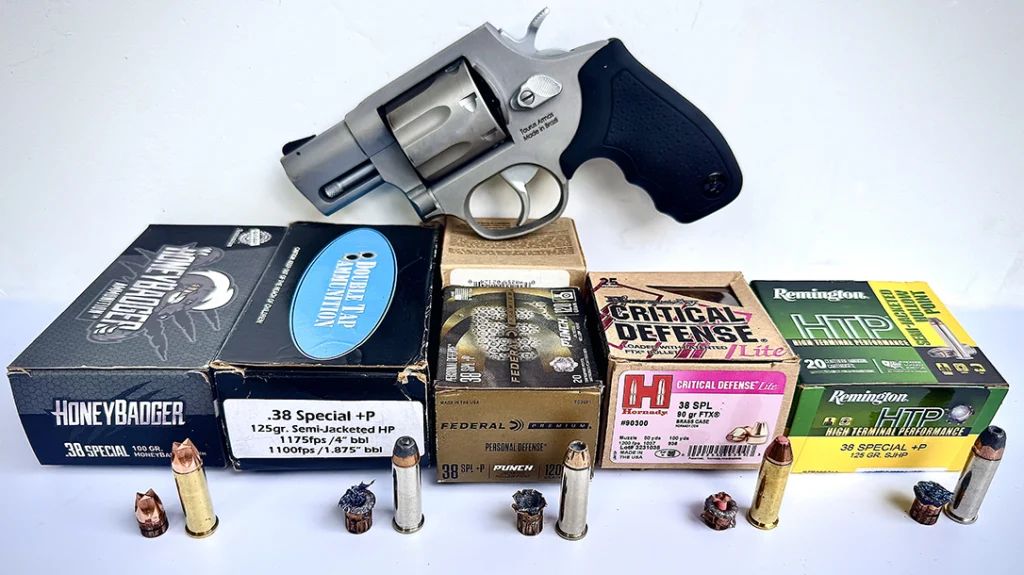
Advertisement — Continue Reading Below
Model 817 Carry Preparation
Next, I scoured my holster and leather-gear collection for a proper scabbard for the Taurus 817. My search disclosed a Galco Masterbilt Revenger Belt Holster. This rig is crafted of lined, premium steerhide, and hand-molded. It’s an open-top, high-ride, with a mild forward cant, and fits belts up to 1.5-inches wide. The top of the holster tunnel is reinforced to hold it open, and the tunnel also incorporated a sight channel. This shuck is designed to pull the butt of the revolver into the body to improve concealability. My sample was tan in color and it can also be had in black. I hung it on a Galco SB2 Casual Holster Belt that is 1.5-inches wide and offers great support.
To carry extra ammunition, I selected a Model 587 speedloader from HKS. Made for the S&W .357 Magnum L-frame Plus, it works just fine in the Taurus 817. To pack it on my belt, the answer was the Sidewinder Speedloader pouch from Rob Leahy’s Simply Rugged Holsters. The pouch is a leather, circular shaped, with a flap and snap closure at the top. Added leather strips on the ends of the pouch keep the speedloader secure. It has a Kydex belt loop riveted to the pouch that will accommodate belts up to 1.75-inches in width. Mine is tan and sized for L-frames.
Square Range Ruminations
My day at the range started out kind of rocky. I set up my Garmin Xero C1 Pro chronograph to get bullet velocity measurements. I also sent a black bullseye target down to the 10-yard line to get an idea of the sights point of aim/point of impact (POA/POI) at the same time. The problem was, the black front sight on the Taurus 817 disappeared on the black bullseye. Some bright colored nail polish or that AmeriGlo replacement front sight would fix that.
Advertisement — Continue Reading Below
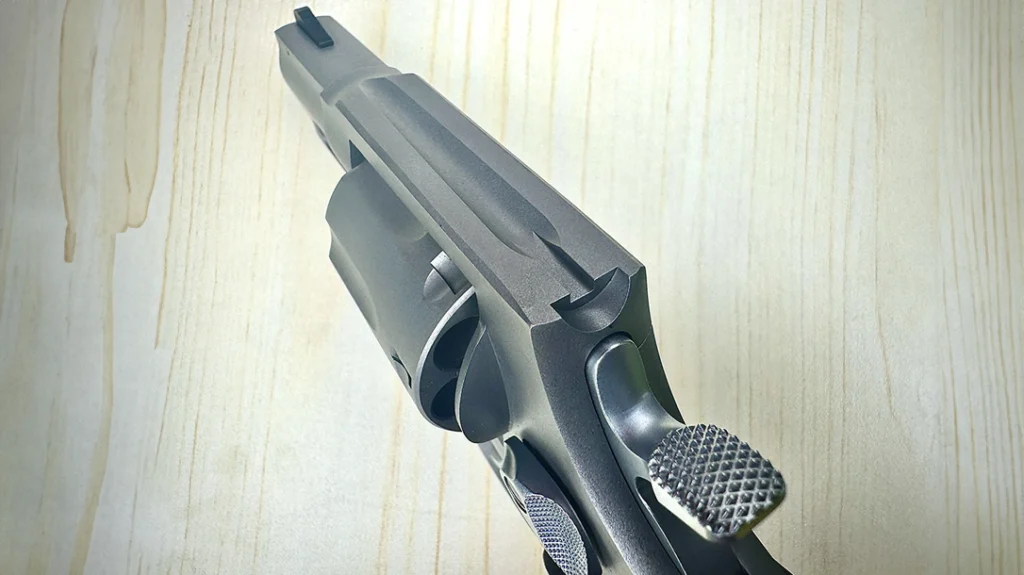
I ended up shooting in the direction of the target, just to get my bullet velocities. Next, I sent double bullseye targets down to the 10-yard line. These targets are oval-shaped, with gray rings and a red aiming center. The black front sight worked better with them. Using my Ransom Steady Rest, I shot three-5 shot groups, single action (SA) with the five .38 Special test loads. I held the front sight dead on the red aiming center for the first group, then adjusted my hold depending on the POA/POI. Most of the cartridges were shooting low and left.
My best 5-shot group was made using the Remington 125 gr. JHP +P load; it measured 1.02-inches. Close on its heels was the Double Tap 125 gr. JHP +P, with a 1.08-inch cluster. Group averages were between 1.48 and 2.27 inches. All the group data and velocity averages can be found in the performance table.
Advertisement — Continue Reading Below
Practical Drills
For a practical shooting exercise, I came up with what I called a 3-5-7-10 drill. The Taurus 817 was loaded with a mix of the test ammo; as was the HKS speedloader. This gave me 14 rounds on tap for my lethal defense scenario. My target was a tan IDPA silhouette. As I wasn’t using IDPA “raw time” scoring, I gave the -0 zones 5 points, the -1 and -3 zones I counted as minus 1 or 3 points. My course started with the target at 3 yards.
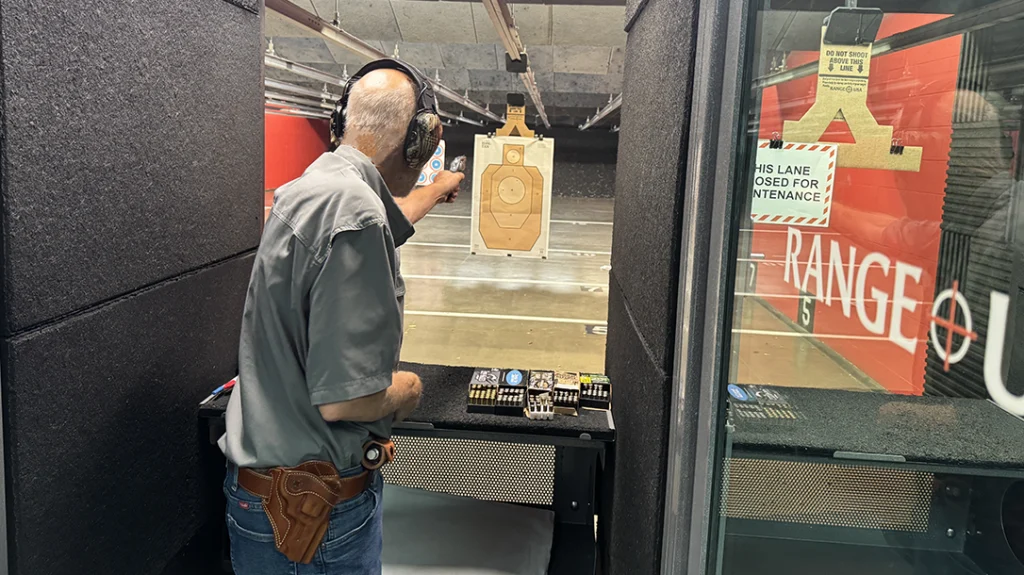
As I couldn’t draw from the holster at Range USA, I held the revolver at low-ready as close as I could to the holster to begin each stage. Stage #1 was shooting 2 rounds strong-hand only, transitioning the gun to my support hand and firing 2 more shots. A 360°threat assessment was done at the end of each stage. The target was moved to 5 yards. I “drew” used a two-handed point should stance and fired 3 shots, and reloaded with the speedloader. Then, the target was moved to 7 yards. Here, I made 2 shots center-mass and 1 head shot. Stage #4 was at 10 yards, and using my large range back as a barricade, I shot two rounds from the left side and two from the right side. All shooting was DA; Stages #3-4 were shot using the sights.
Advertisement — Continue Reading Below
In Practice With Model 817
My first go-around wasn’t what I wanted. I had a -1 hit, my head shot was in the -0, but just barely and low-left. At 10 yards, I had a high primer or badly seated cartridge and I really had to crank on the trigger to make the 817 go boom. That shot went outside the tan silhouette in the gray area. I did the course a second time. Much better. All my torso hits were -0 and fairly well centered, my head shot was better, but still low-left. The good news was, I had no issues. The weigh of the Taurus 817, plus the rubber grips, made all shots in rapid-fire controllable. I didn’t get bit by the cylinder thumb-latch, and the ejector rod knocked out al the empty cases with aplomb. I came away from the range impressed with Taurus’ latest offering.

Trip to the Bell Ballistics Lab
I was curious to see how the .38 Special test ammunition would do in the bullet penetration/expansion department when shot from the 2-inch barrel of the 817. I set up a Clear Gel block in my test-lab, otherwise known as my backyard shed. The 16-inch ballistic gel block was backed up by a roll of paper towels and an AR500-rated steel target. On one end, I taped 4 squares of denim cloth per FBI testing protocol. I shot into the gel block from three feet.
Going in alphabetical order, the Black Hills 100 gr. Honey Badger penetrated to 14.0-inches, with no expansion; the bullet ended up base-first. The conventional 125 gr. JHP from Double Tap went to 15.25-inches, the hollow nose filled with denim, but it expanded to 0.44-inches. The 120 JHP Federal Punch bullet penetrated the 16-inch block, but was found between the gel block and the paper towel roll; which it only dented. Expansion was good at 0.48-inches. Hornady’s Lite 90 gr. FXT bullet made it to 12.5-inches, with 0.43-inch expansion; the Flex Tip insert did its job. The tried-and-true Remington 125 gr. JHP went to 14.25-inches and expanded to 0.45-inches. On a whole, I was pleased with the performance of this ammunition. The bullet designers done good.
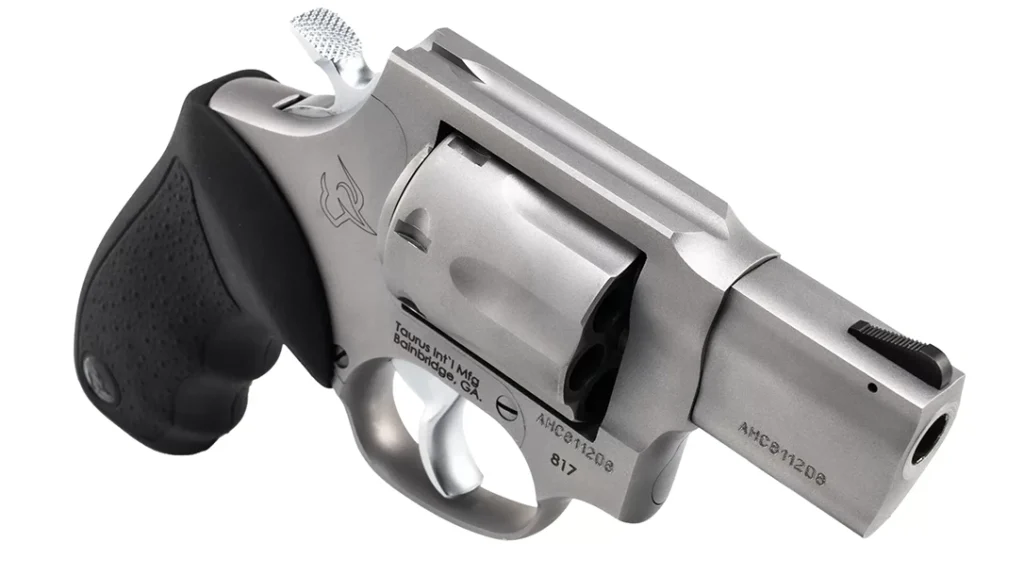
Taurus Model 817 Specifications
- MECHANISM: Traditional DA revolver
- CALIBER: .38 Special +P
- CAPACITY: 7 cartridges
- BARREL: 2 in.
- OA LENGTH: 8.0 in.
- EMPTY WEIGHT: 30.26 oz.
- SIGHTS: Serrated ramp front, fixed square-notch rear
- FINISH: Matte stainless-steel
- STOCKS: Black rubber with finger grooves and textured sides
- MSRP: $649.00
Performance
| Black Hills 100-grain Honey Badger Copper Solid +P | |
| Average Velocity | 996 FPS |
| Best Group | 1.89 inches |
| Average Group | 2.36 inches |
| Muzzle Energy | 220 FPE |
| Double Tap Ammunition 125-grain +P | |
| Average Velocity | 982 FPS |
| Best Group | 1.08 inches |
| Average Group | 1.63 inches |
| Muzzle Energy | 268 FPE |
| Federal Personal Defense Punch 120-grain JHP +P | |
| Average Velocity | 930 FPS |
| Best Group | 1.59 inches |
| Average Group | 1.77 inches |
| Muzzle Energy | 230 FPE |
| Hornady Critical Defense Lite 90-grains FTX-HP | |
| Average Velocity | 946 FPS |
| Best Group | 1.99 inches |
| Average Group | 2.27 inches |
| Muzzle Energy | 179 FPE |
| Remington HTP .38 Special +P 125-grains Semi-JHP | |
| Average Velocity | 931 FPS |
| Best Group | 1.02 inches |
| Average Group | 1.48 inches |
| Muzzle Energy | 241 FPE |
TE: Bullet weight measured in grains, velocity in feet per 15” from the muzzle by a Garmin Xero C1 Pro chronograph, and accuracy in inches for three 5-shot groups at 15 yards. FPE based on bullet weight and velocity.
WHY OUR ARTICLES/REVIEWS DO NOT HAVE AFFILIATE LINKS
Affiliate links create a financial incentive for writers to promote certain products, which can lead to biased recommendations. This blurs the line between genuine advice and marketing, reducing trust in the content.
